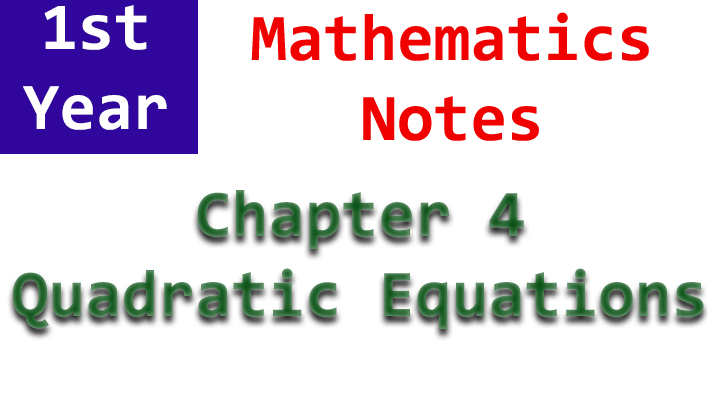A quadratic equation in the variable x is a mathematical expression that can be represented in the form ax² + bx + c = 0, where a, b, and c are real numbers, and a is not equal to zero. Another term used interchangeably for a quadratic equation in x is a 2nd Degree Polynomial in x. Examples of such equations include x² – 7x + 10 = 0 (with a = 1, b = -7, c = 10), 6x² + x – 15 = 0 (with a = 6, b = 1, c = -15), 4x² + 5x + 3 = 0 (with a = 4, b = 5, c = 3), 3x² – x = 0 (with a = 3, b = -1, c = 0), and x² = 4 (with a = 1, b = 0, c = -4).
To solve quadratic equations, three fundamental methods are commonly employed:
Factorization: This technique involves factoring the quadratic expression ax² + bx + c, leveraging the property that if the product of two values ab equals zero, then at least one of them, a or b, must be equal to zero. For instance, if we consider the equation (x – 2)(x – 4) = 0, we can conclude that either x – 2 = 0 (leading to x = 2) or x – 4 = 0 (leading to x = 4). Hence, the equation x² – 7x + 10 = 0 can be solved by factorization, yielding the solutions x = 2 and x = 5.
Completing the Square and Extracting Square Roots: In cases where quadratic equations are not easily factorizable, an alternative method is to complete the square and then extract square roots. For instance, for the equation x² + 4x – 437 = 0, we use the technique of completing the square to obtain x² + 4x + 4 = 437 + 4, leading to (x + 2)² = 441, which in turn yields solutions x = 19 and x = -23.
Quadratic Formula: When factorization is not possible with integral coefficients, the quadratic formula serves as a universal solution method for any quadratic equation ax² + bx + c = 0. The formula is derived by dividing the equation by ‘a,’ completing the square, and solving for x, resulting in the formula x = (-b ± √(b² – 4ac)) / (2a). For instance, for the equation 6x² + x – 15 = 0, we can apply the quadratic formula to find the solutions x = 5/3 and x = -3/2.
These methods provide the means to solve quadratic equations, yielding sets of values for ‘x’ that satisfy the equations, often referred to as the solution set or roots of the equations. In summary, quadratic equations are a fundamental part of algebra, and these solution techniques are essential tools for finding their solutions.

